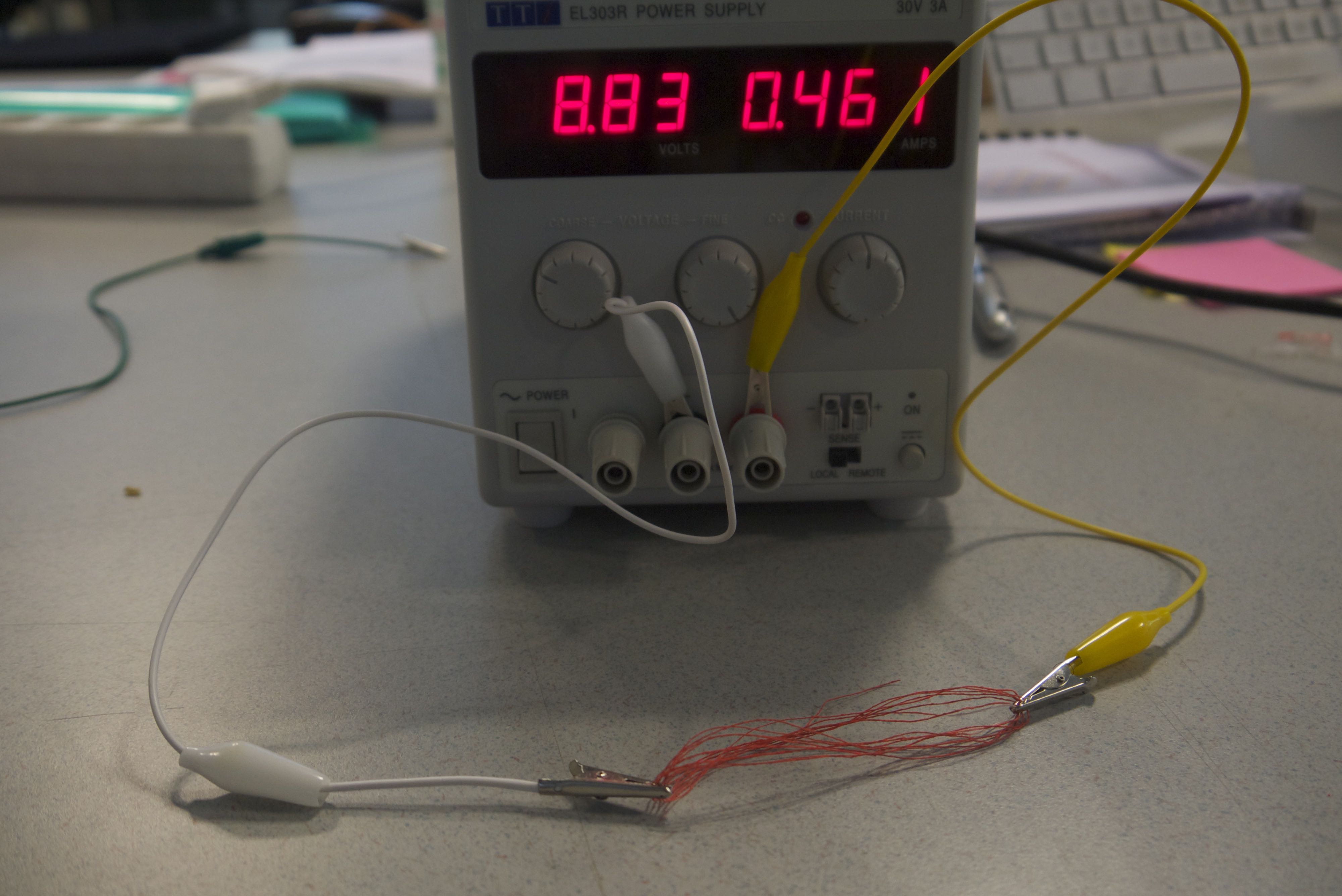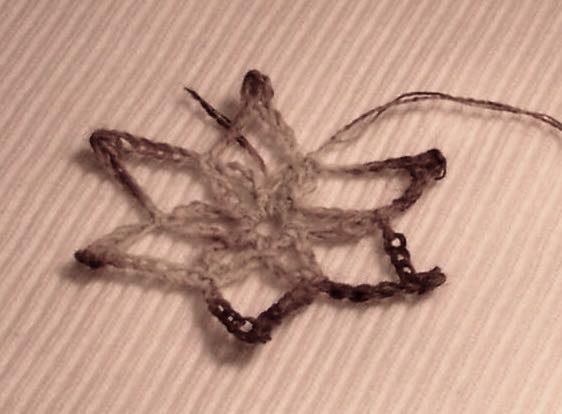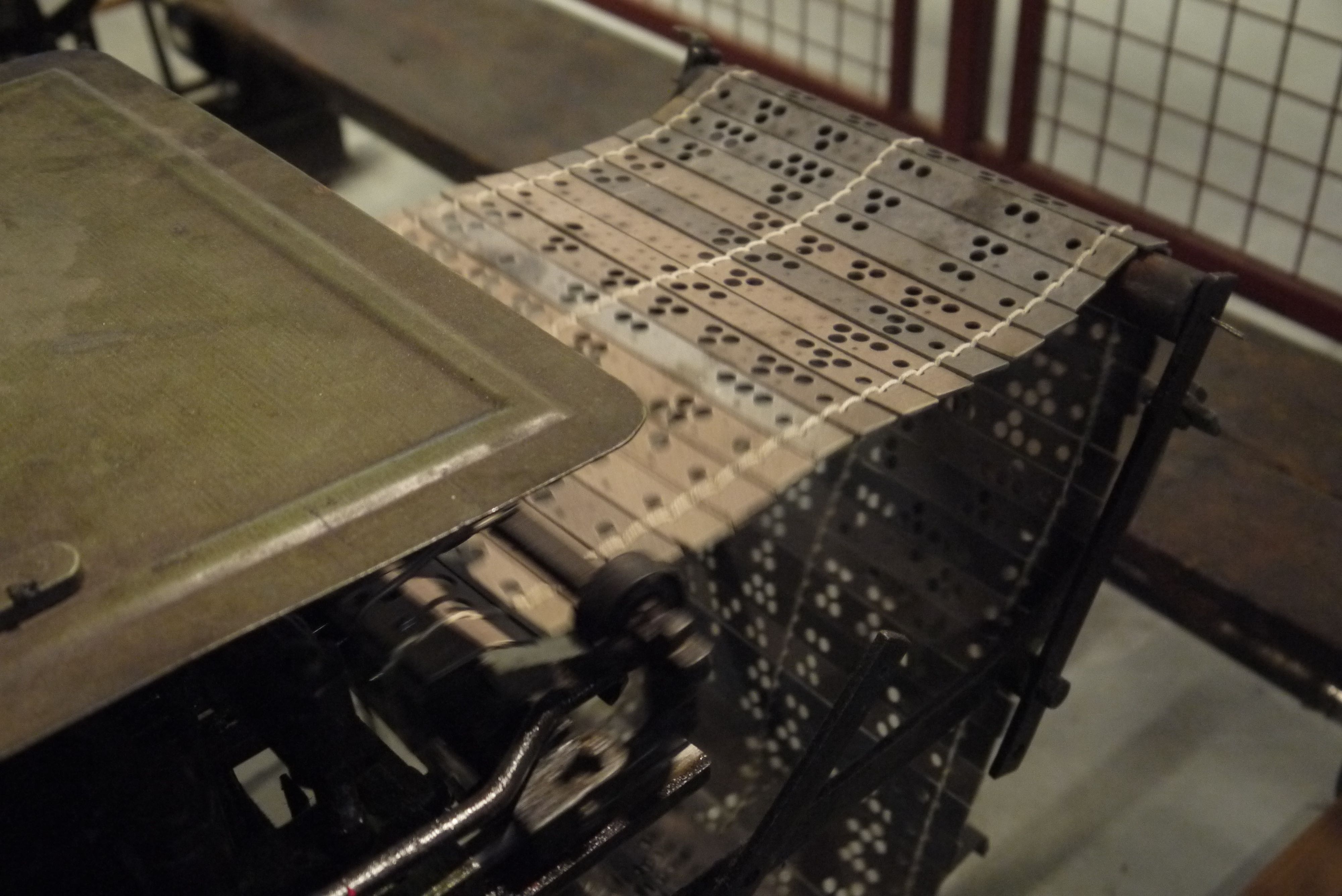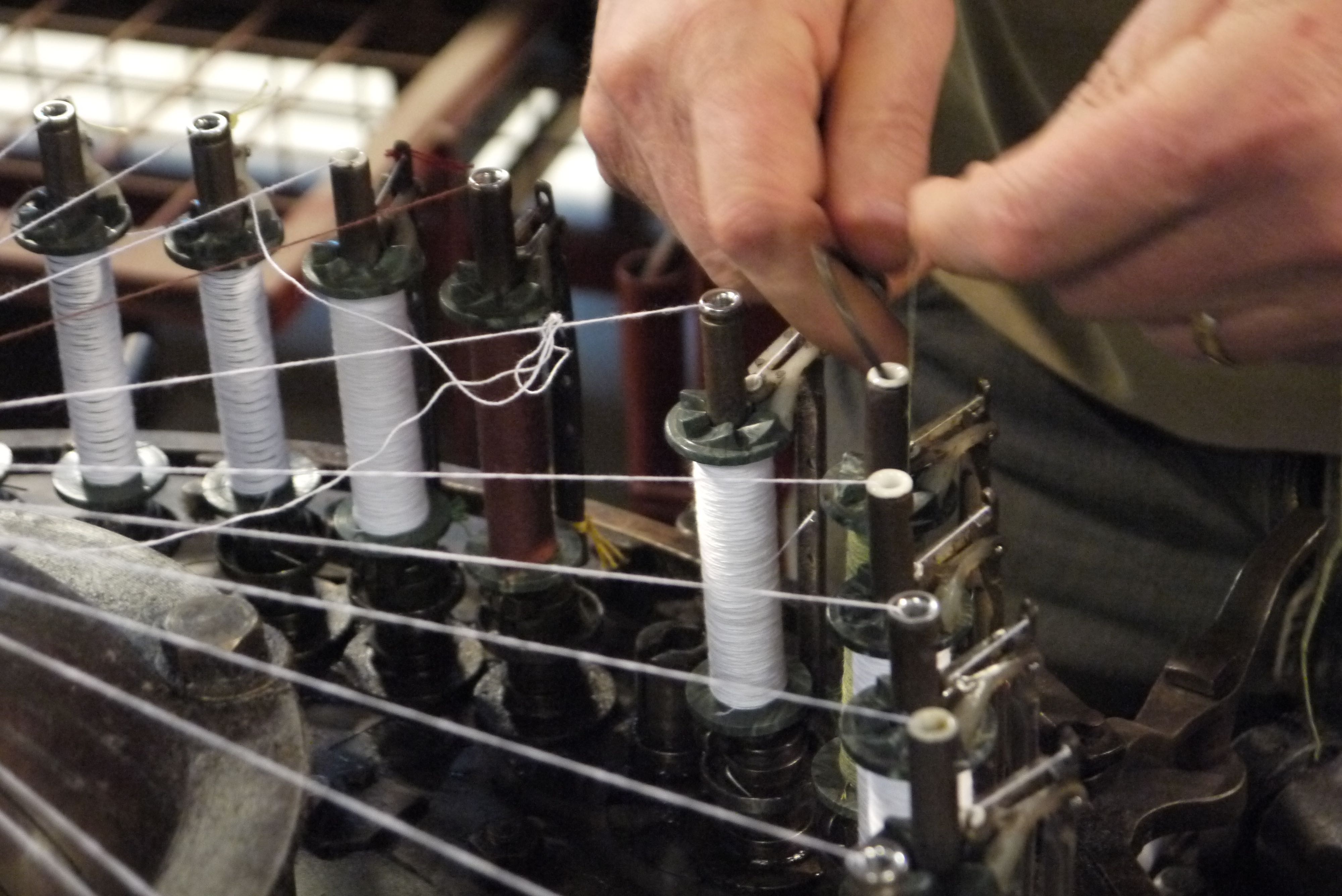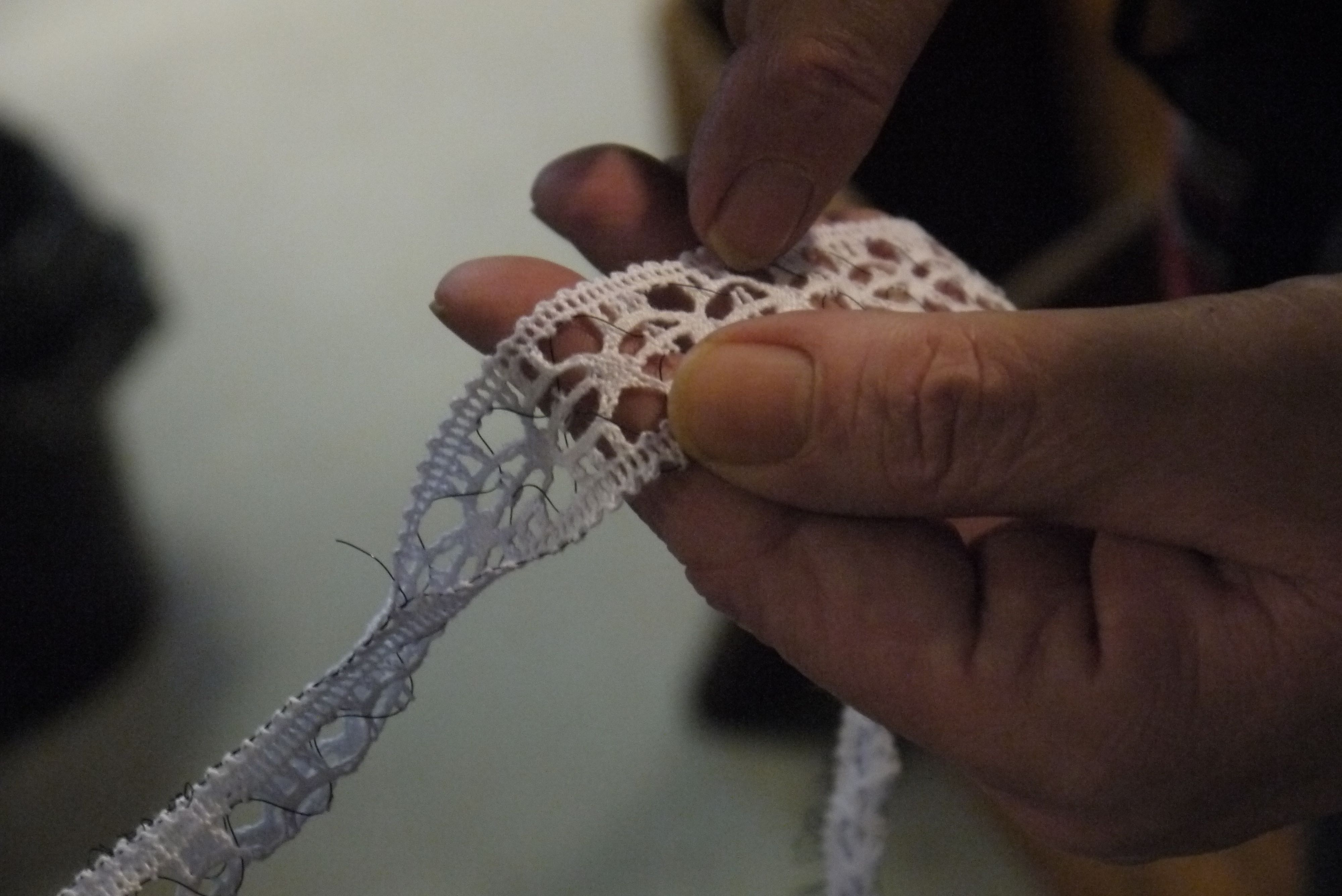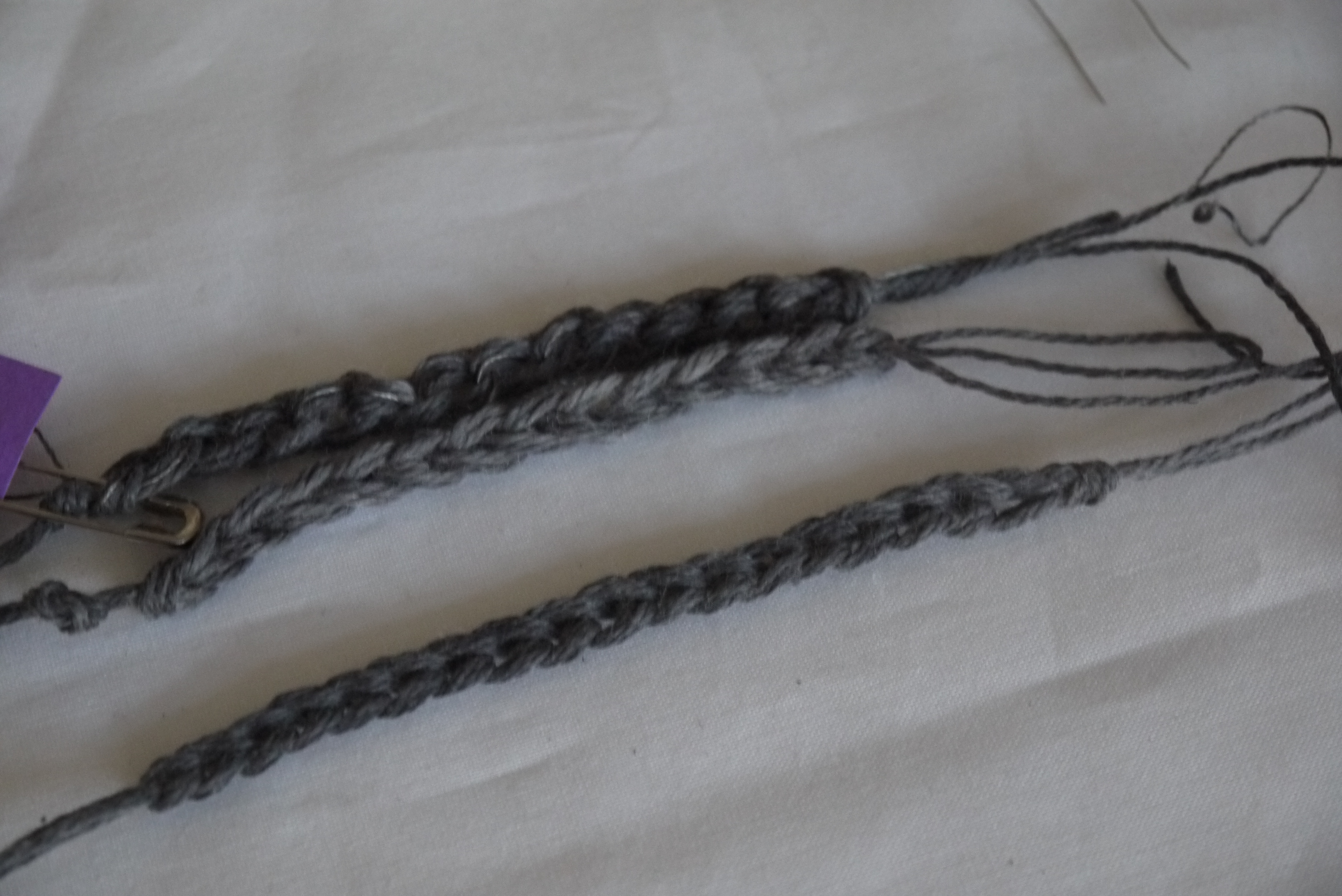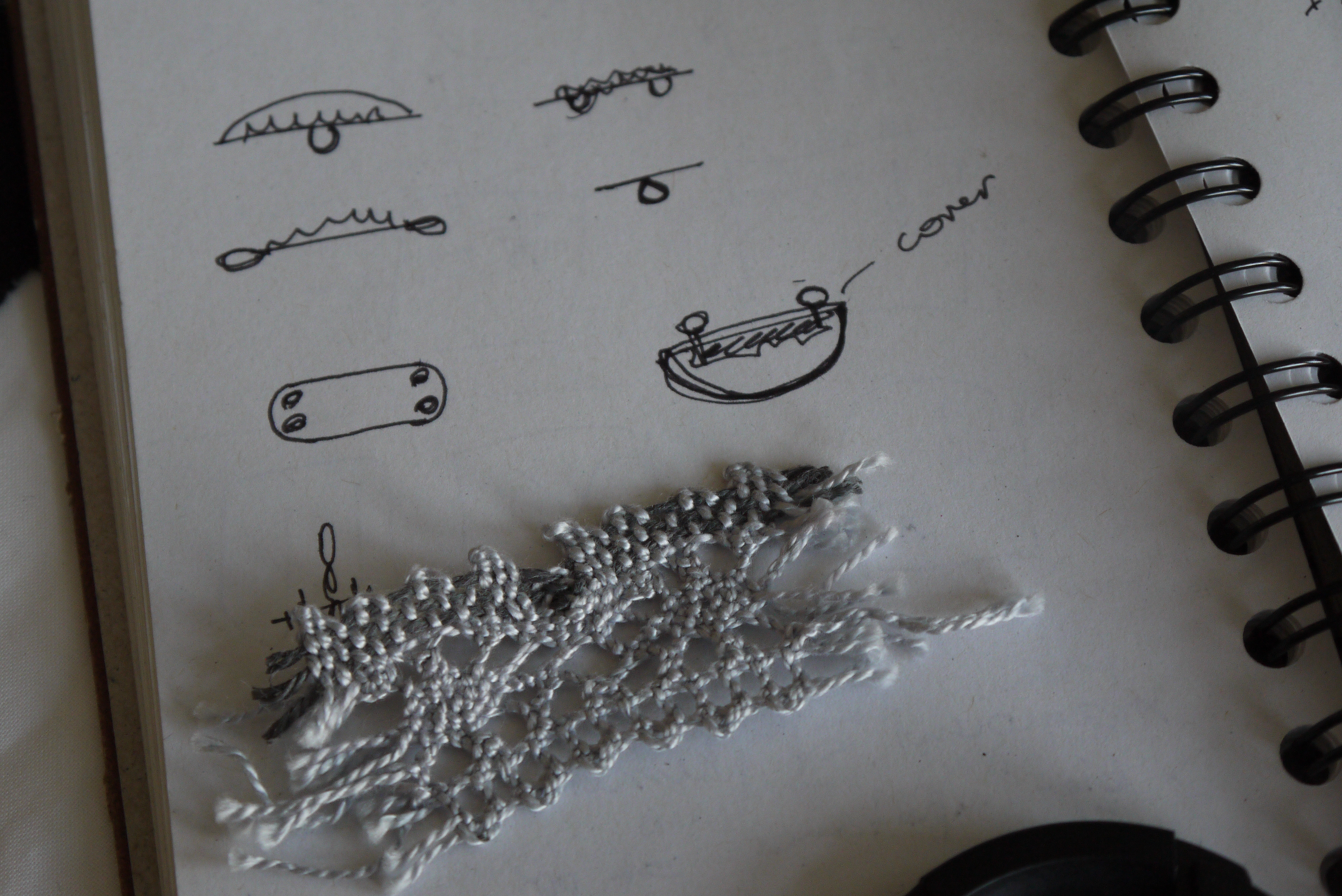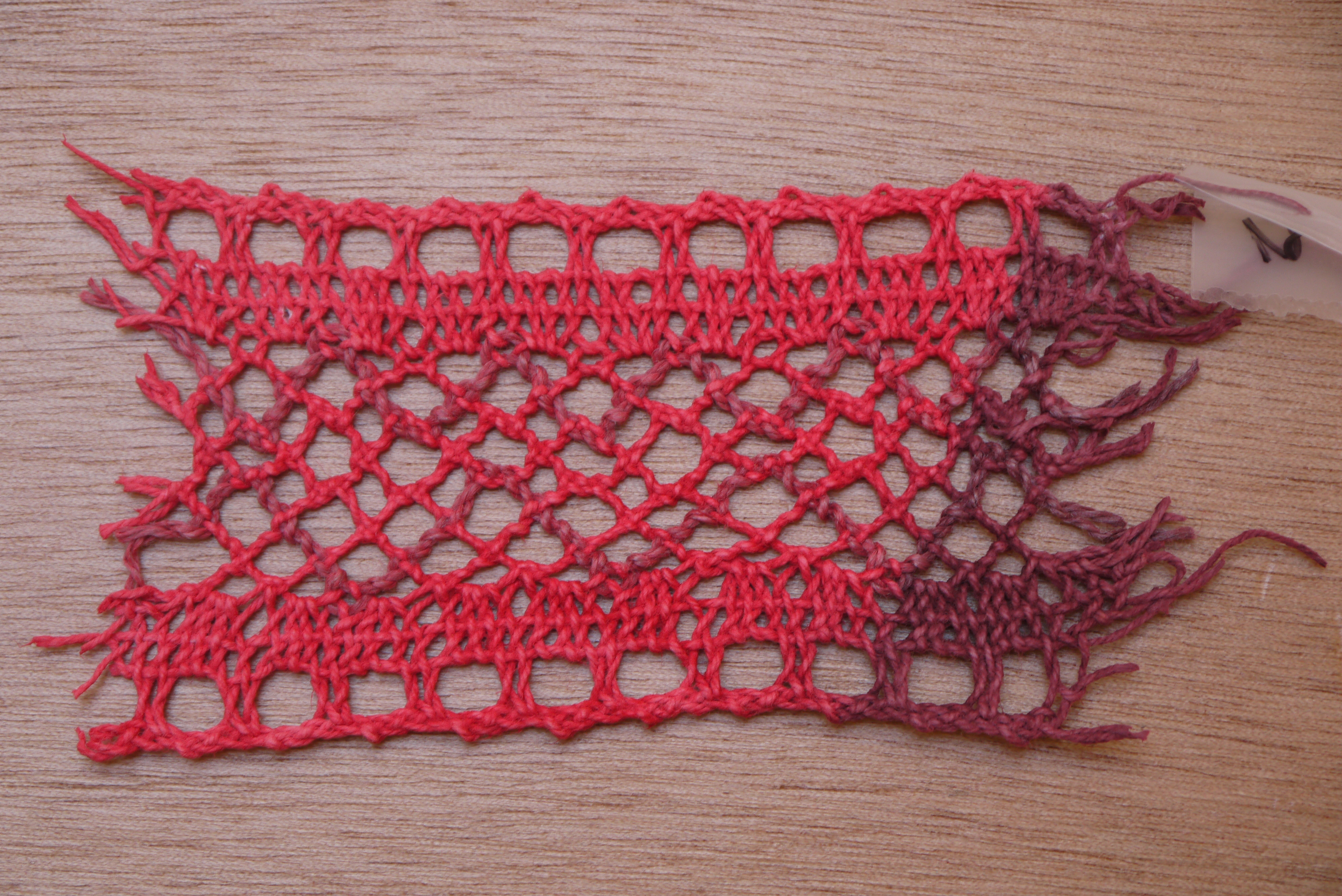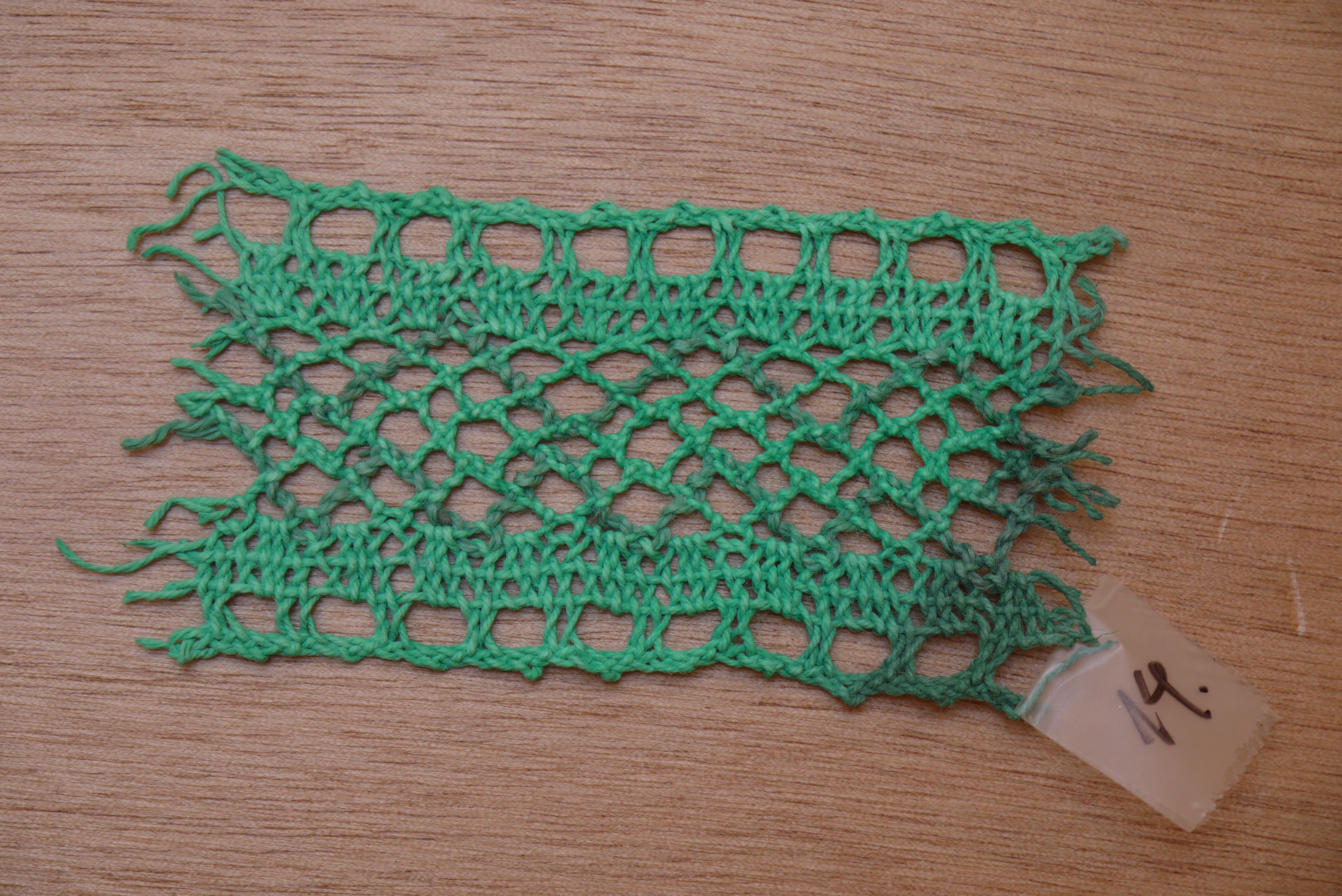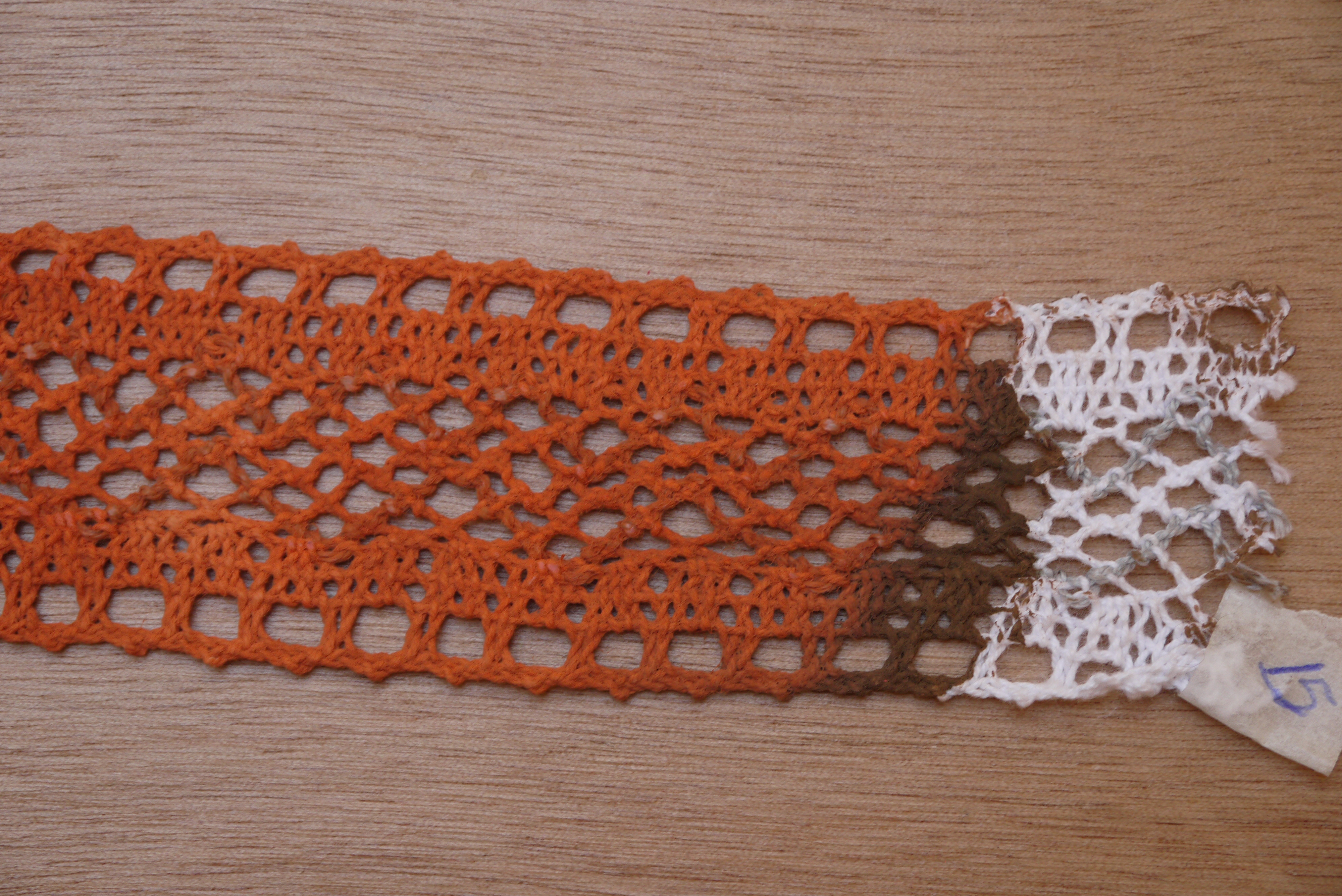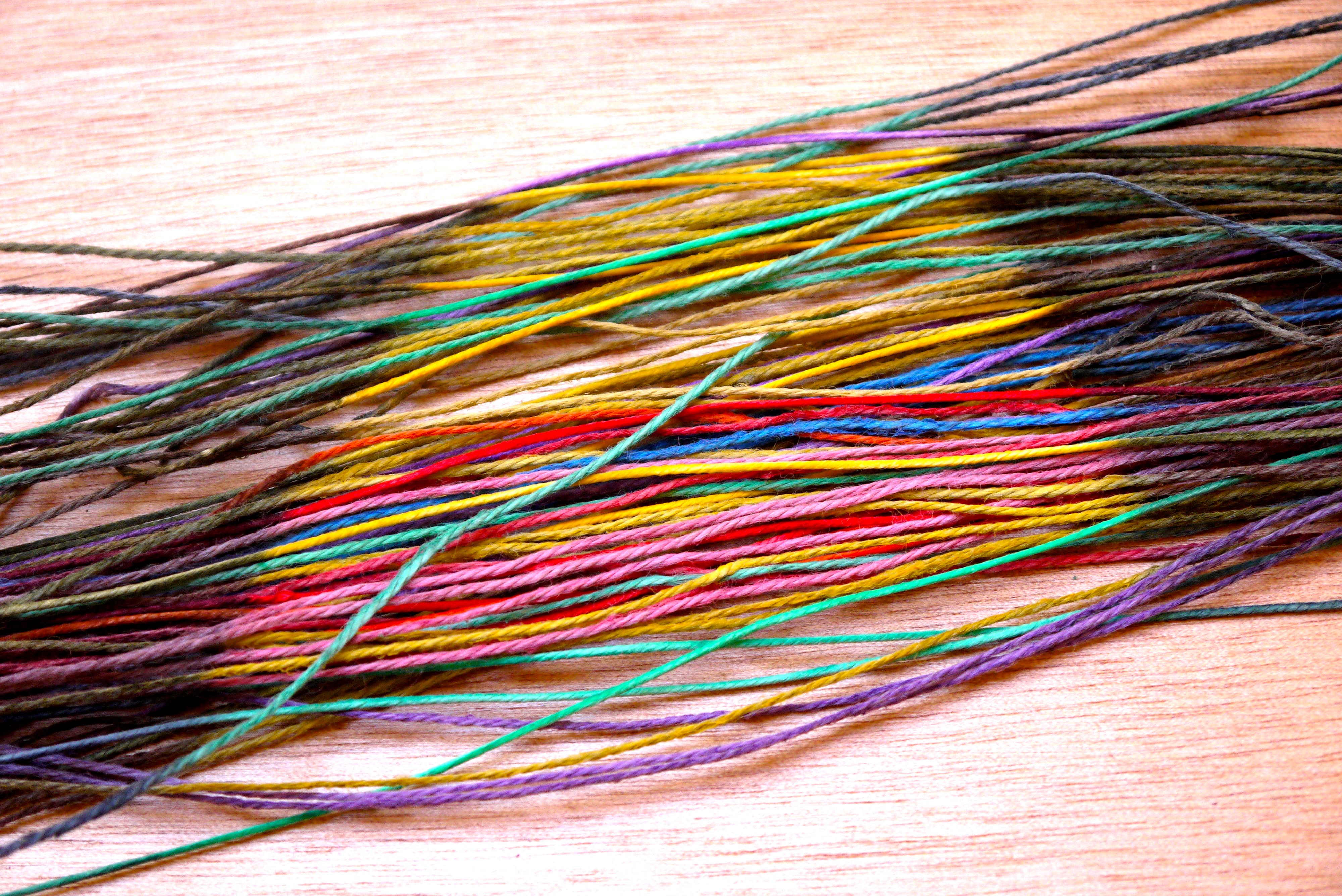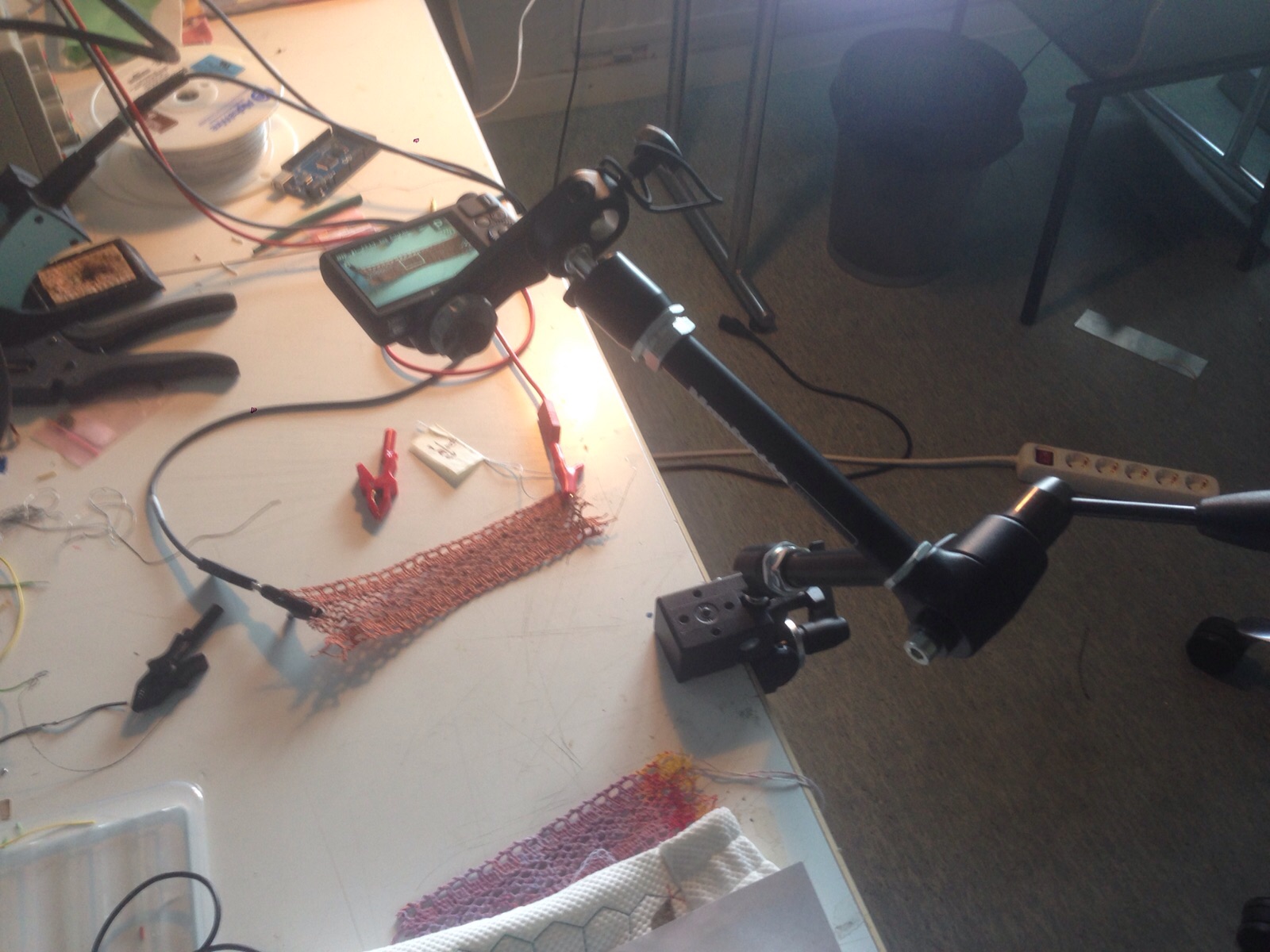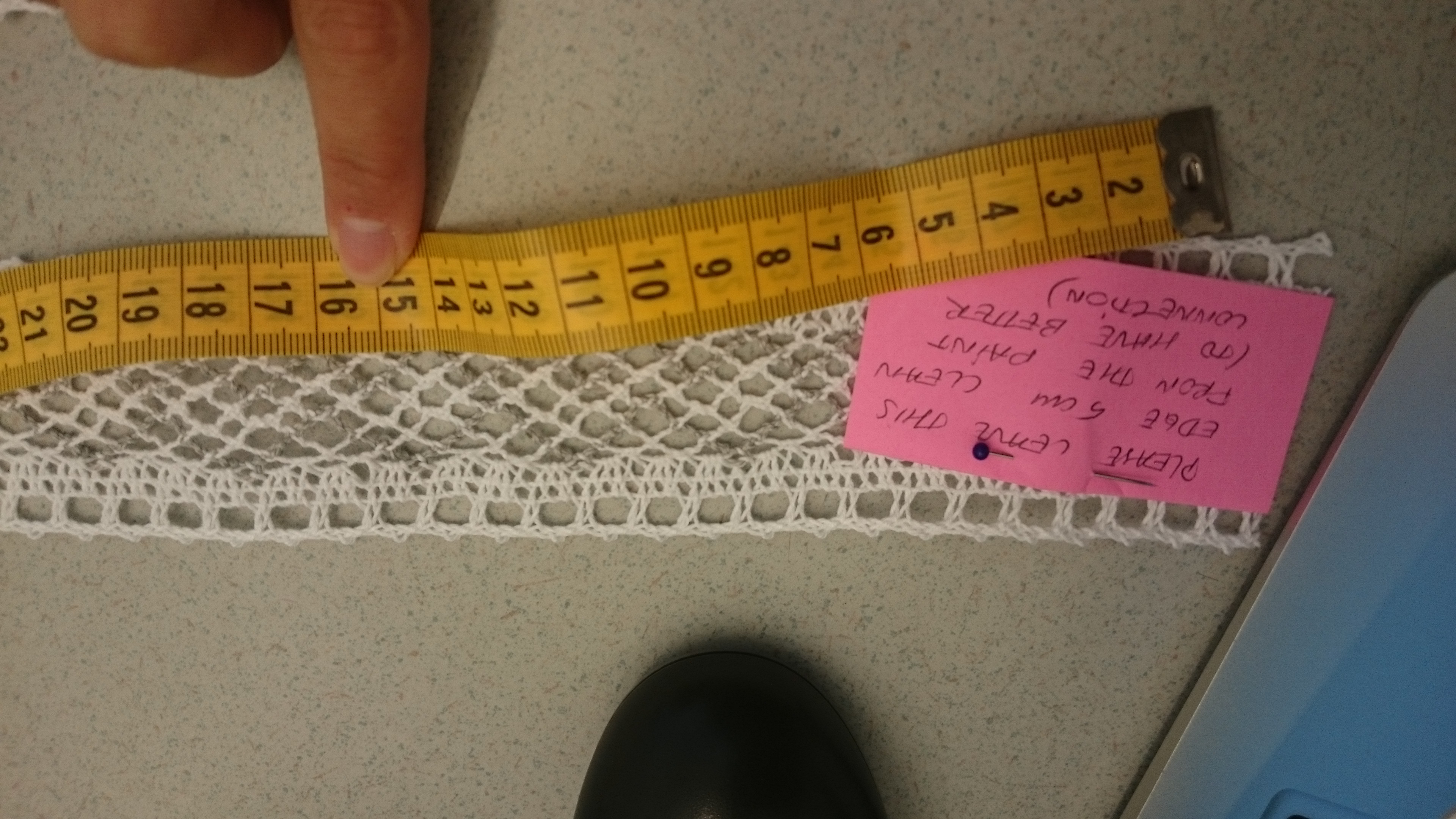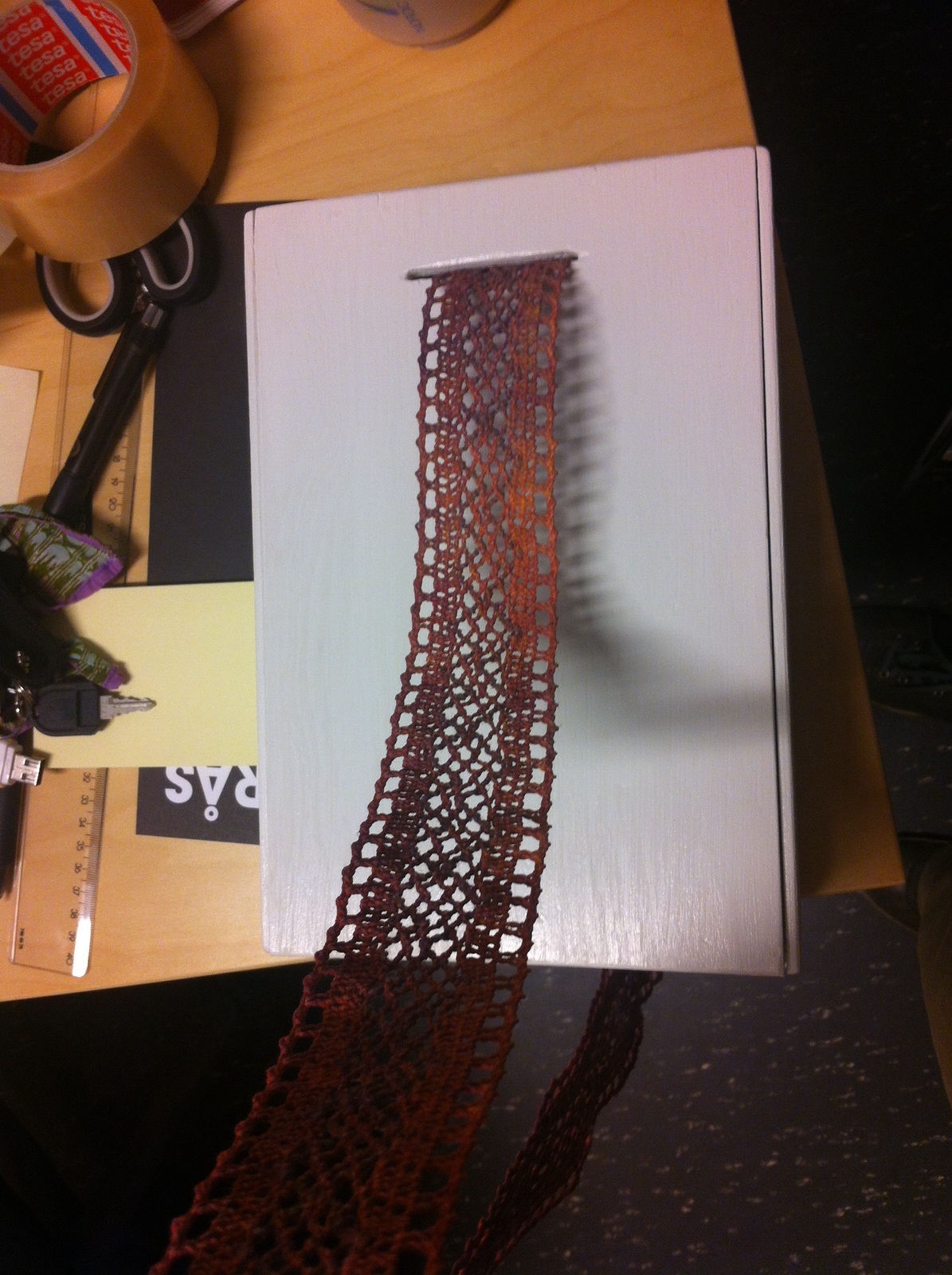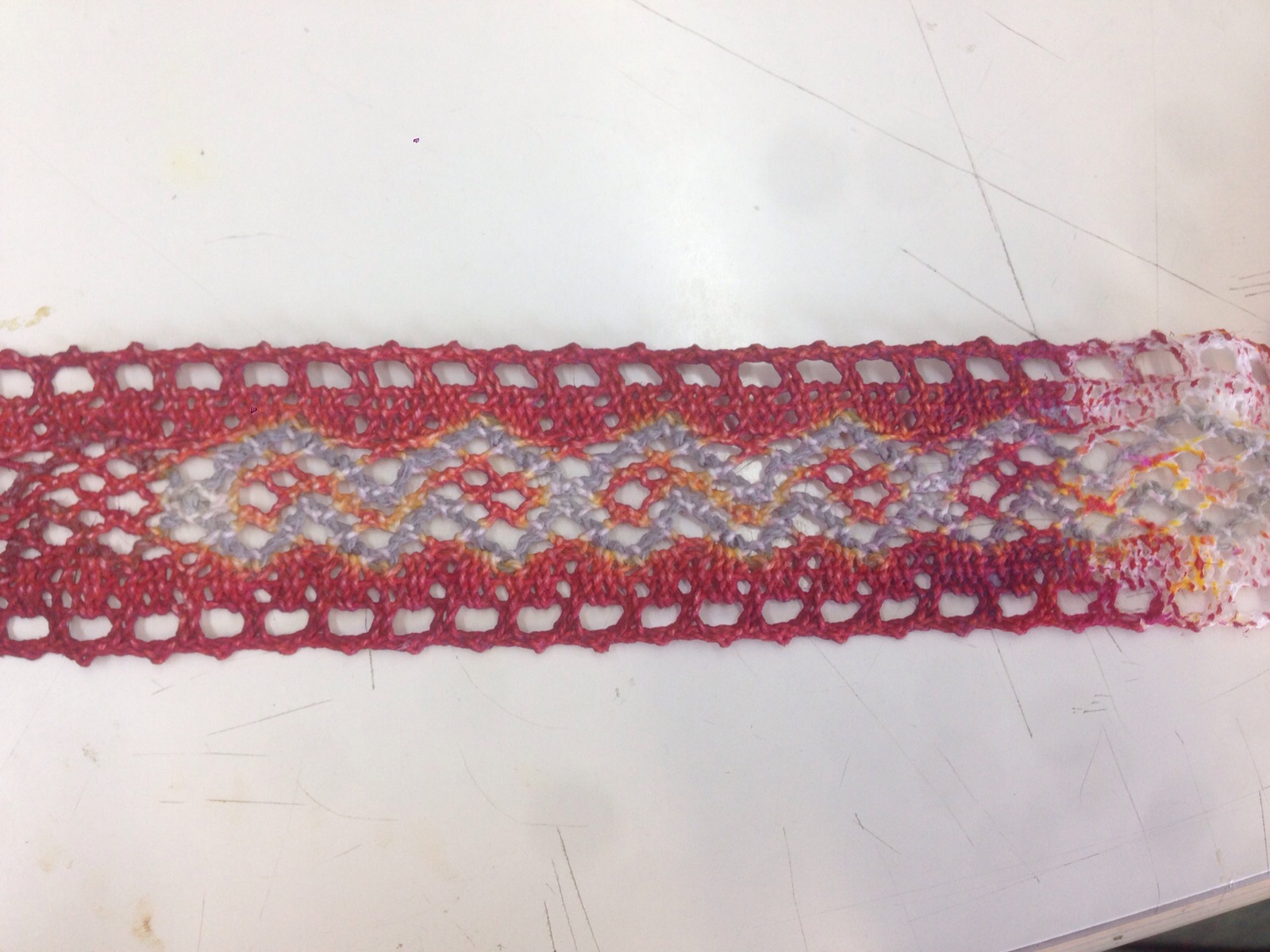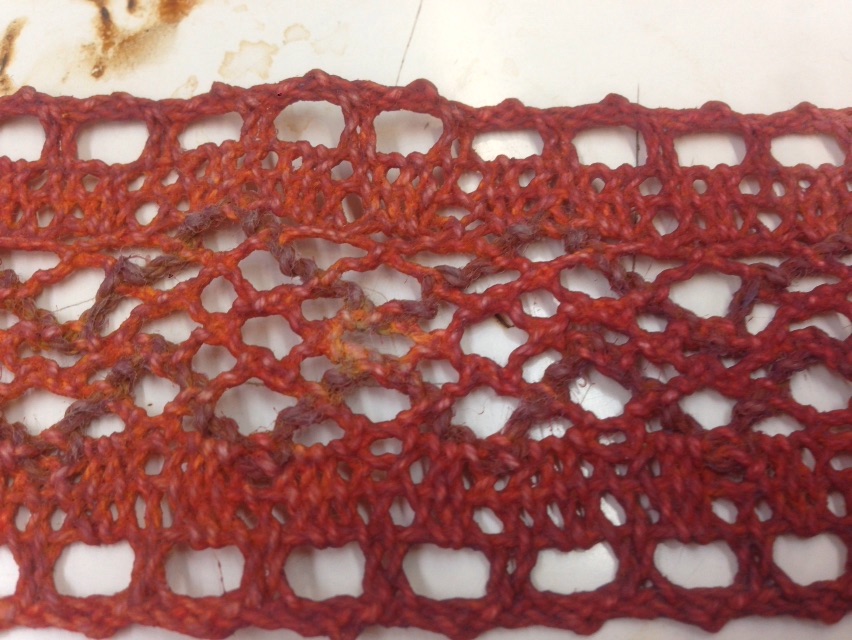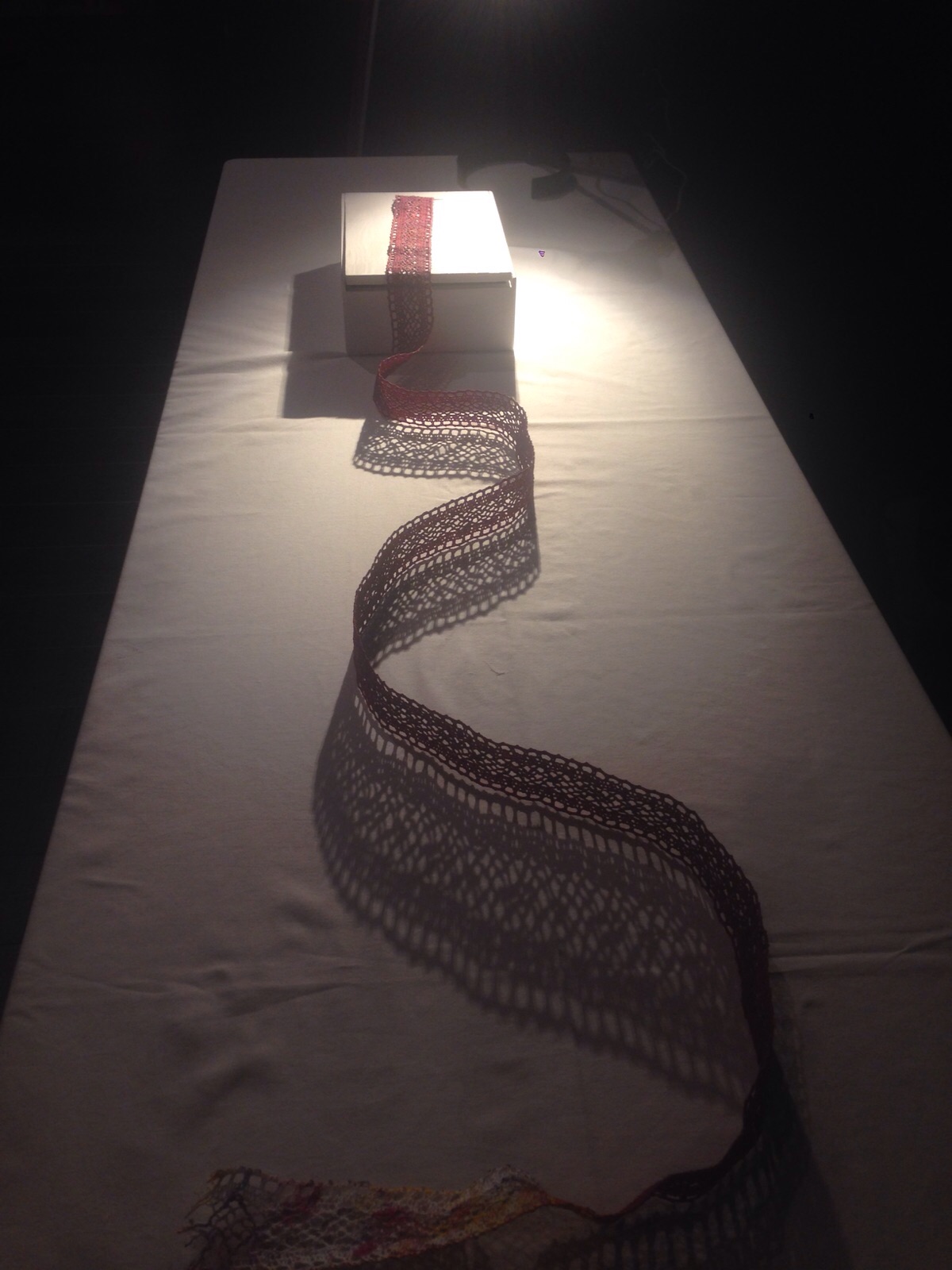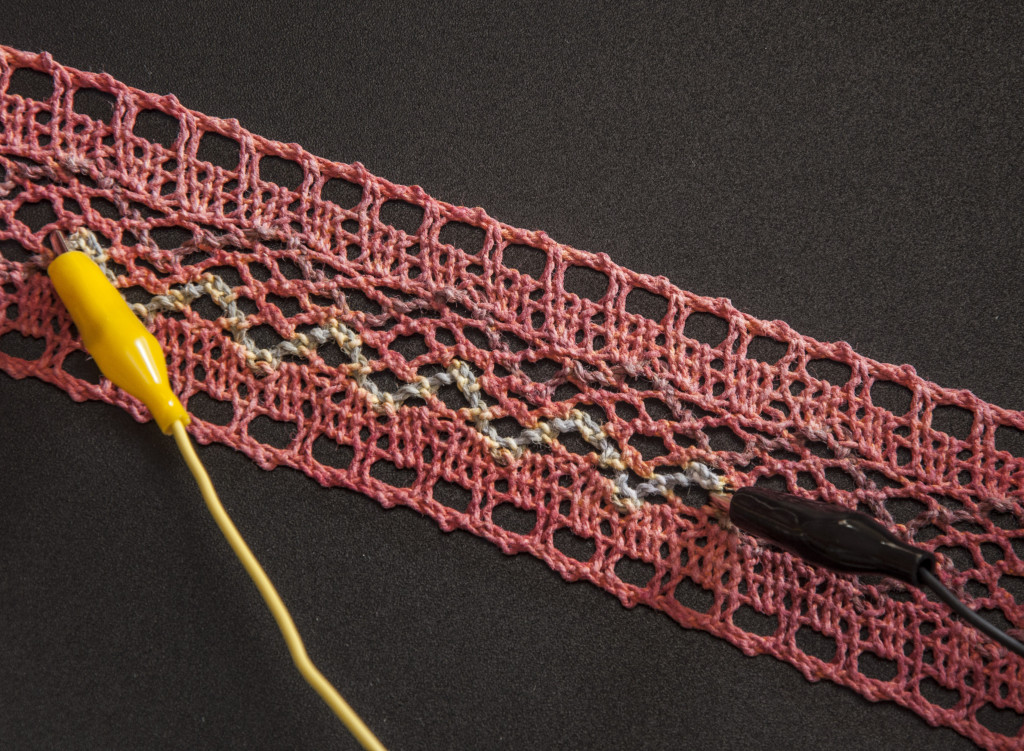Butterfly Lace by Kristi Kuusk (Eindhven University of Technology), Marjan Kooroshnia (The Swedish School of Textiles) & Jussi Mikkonen (Aalto ARTS) is a Conductive Multi-Color Sensor-Actuator Structure that lies in the intersection of traditional craft and smart materials.
The lace senses how it has been touched, and outputs a programmed behaviour. The conductive yarn in the lace structure acts as a sensor and an actuator at once. After detecting the touch, it warms up to a certain degree and causes the thermo sensitive pigment to change the colour accordingly. The colour mix is optimised to show violet-blue at ambient temperature, orange at 27°C, yellow at 37°C and grey at 47°C.
The development of Butterfly Lace started and carried on as an extension of ArcinTex network workshop (Arcintex, 2014). Multi disciplinary team of researchers collaborated while situated in three countries, to realize conductive multi-color sensor-actuator structure. Over several prototyping sessions, Skype conversations and e-mail exchange, the lace is made in a traditional lace factory in Eindhoven, dyed in Boras and electronic component circle designed as well as assembled during a Berlin residency.
The work was presented at ISWC design exhibition, Osaka, Japan in Sept. 7-11 2015
The work describes background and methods involved in the development of Butterfly Lace.
Some visual insights from the long-distance collaboration:
